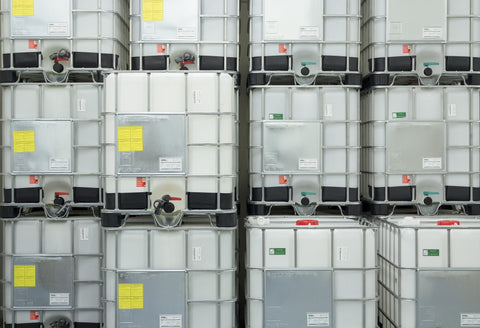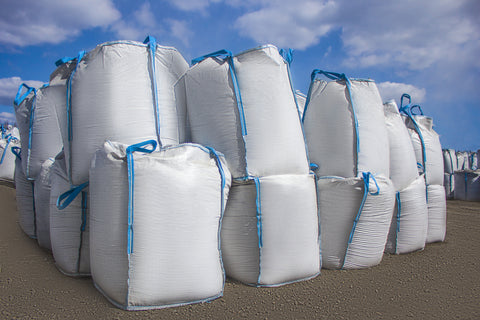Introduction to Acetic Acid and Its Industrial Significance
Acetic acid, a versatile industrial chemical, is pivotal in various chemical processes. Known also as ethanoic acid, its applications range from being a key ingredient in vinegar to its use in producing glacial acetic acid, a more concentrated form. This carboxylic acid is a fundamental organic compound and a critical player in the chemical industry.

Understanding IBC Totes and Their Role in Acetic Acid Storage
Intermediate Bulk Containers (IBCs) or IBC Totes are widely used for storing and transporting liquids, including acetic acid. Their design and material compatibility make them ideal for holding and preserving the quality of acetic acid, ensuring safety and efficiency in industrial settings.
Acetic Acid Production and Applications
Acetic Acid Techniques for Production
Acetic acid, a prominent industrial chemical and a key member of carboxylic acids is produced primarily through the Rhodium-Based Monsanto process and other advanced techniques. This process, a significant reaction involving methanol and carbon monoxide, leads to high-purity acetic acid, also known as methanecarboxylic acid. This method has revolutionized how companies can produce acetic acid, enhancing both efficiency and output quality.
Properties and Phases of Acetic Acid
In its pure form, acetic acid is a colorless liquid, notable for its pungent odor and acidic nature. It exists in a liquid phase at room temperature and has a unique melting point crucial for its storage and handling. The acid's dielectric constant is also a key physical property, influencing its use as a solvent in various chemical processes.
Industrial and Chemical Applications
Acetic acid serves as a versatile solvent and is integral in producing a variety of organic compounds. One of its major derivatives is cellulose acetate, used in producing photographic films and textiles. Another significant byproduct is methyl acetate, which is employed in various chemical reactions.
In the realm of industrial chemicals, acetic acid's role extends beyond being just a reactant. It's used to adjust concentration levels in many chemical processes, ensuring the desired reaction outcomes. Its application in other foods and industries further exemplifies its versatility.
The Science Behind Heating Acetic Acid
In order to heat acetic acid efficiently, it is crucial to maintain its chemical integrity. Acetic acid has a distinct melting point and a specific dielectric constant, making heating it a delicate one. Understanding its vapor behavior and physical properties is essential to ensure efficient heating while preventing quality degradation.
How does temperature affect acetic acid?
As temperatures rise, molar concentrations for ethanoic acetal acids increase. During heat, the volume of liquid evaporates, resulting in a greater concentration, which can eventually result in acetic anhydride once completely dehydrated.
Methods of Heating IBC Totes of Acetic Acid
Various methods can be employed for heating IBC Totes of acetic acid. Each method has its own set of protocols to maximize efficiency and safety. Choosing the right heat source and maintaining the ideal temperature are key factors in this process.
When heating this acid in IBC Totes, there are a few key methods to consider:
-
Direct Heating: This involves attaching electric heaters or using steam coils directly on the tote. It's fast but requires careful temperature monitoring to avoid overheating the acetic acid.
-
Indirect Heating: Here, a heat transfer fluid is circulated around the tote. It offers a more controlled heating process and reduces the risk of overheating.
-
Immersion Heaters: These are placed inside the acetic acid. They heat quickly but must be made of materials that resist corrosion and require close temperature monitoring.
-
Insulated Blankets: Used alongside other methods, these help maintain consistent temperatures and protect against external temperature changes.
Safety Measures and Precautions
Due to its pungent odor and potential skin irritation, handling acetic acid requires stringent safety measures. Adequate ventilation and protective gear are essential, especially when dealing with vapors during heating. Adhering to these precautions is vital for safe industrial operations.
Acetic Acid in Various Industrial Processes
Acetic acid, a key chemical in the industry, serves as a precursor for substances like vinyl acetate monomer and cellulose acetate, crucial in creating a variety of products. Its derivative, acetic anhydride, plays a significant role in diverse chemical reactions. Beyond these, acetic acid's applications extend to various sectors:
-
Vinegar Production: Acetic acid, apart from water, is the main component of vinegar. Vinegar is widely used in cooking, as a condiment, and for pickling foods.
-
Chemical Manufacturing: It serves as a critical starting material in the synthesis of various chemical compounds, including acetate esters, acetic anhydride, and vinyl acetate monomer. These derivatives are used in the production of plastics, photographic films, and textiles.
-
Food Industry: Besides vinegar, acetic acid is used as an acidity regulator in the food industry, known as E260. It helps control the acidity or alkalinity of food products.
-
Agricultural Sector: It's used as a herbicide, particularly for controlling weeds. Acetic acid can be an effective and environmentally friendly alternative to traditional chemical herbicides.
-
Medical Field: Diluted acetic acid is sometimes used in medical treatments, for instance, as an antiseptic agent to treat otitis externa (outer ear infections). It is also used in cervical cancer screening and can be part of a treatment for jellyfish stings.
-
Cosmetics and Personal Care: In diluted form, it can be used in cosmetics and personal care products, such as hair conditioners and scalp treatments, due to its acidity which can help in balancing pH levels.
-
Industrial Cleaning: Acetic acid effectively removes mineral deposits from surfaces like glass and metal, making it useful in industrial cleaning applications.
-
Textile Industry: It's used in the textile industry as a mordant in the dyeing process and to neutralize the basic effects of residual soap.
-
Laboratory Use: Acetic acid is used in analytical chemistry for chromatography and as a solvent in various chemical reactions.
-
Leather Processing: Acetic acid is utilized in tanning processes in the leather industry.
-
Asphalt Production: Acetic acid is also used as an emulsifier in the production of asphalt and the overall asphalt industry. Its properties help in stabilizing the mixture, ensuring a consistent and durable end product. This application highlights its versatility in industrial processes beyond the traditional scopes.
Wrapping Up: The Future of Acetic Acid in Industrial Heating Solutions
The efficient heating of acetic acid in IBC Totes is a topic of paramount importance in the chemical industry. The continued focus on optimizing these processes and ensuring safety will undoubtedly influence the future trajectory of acetic acid's industrial applications.








